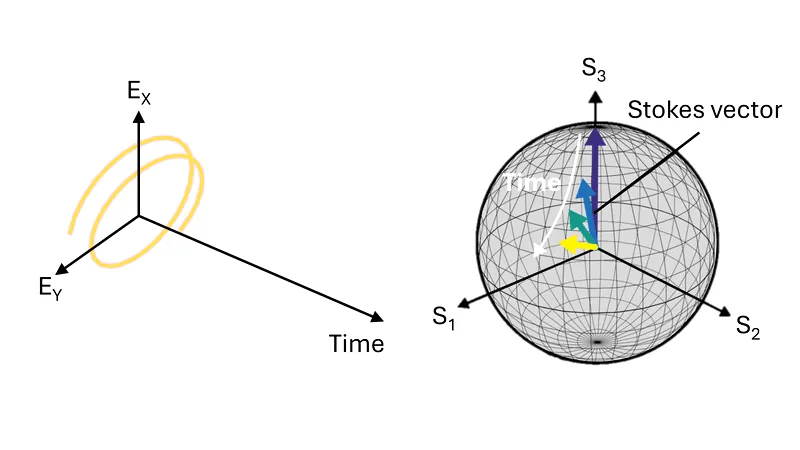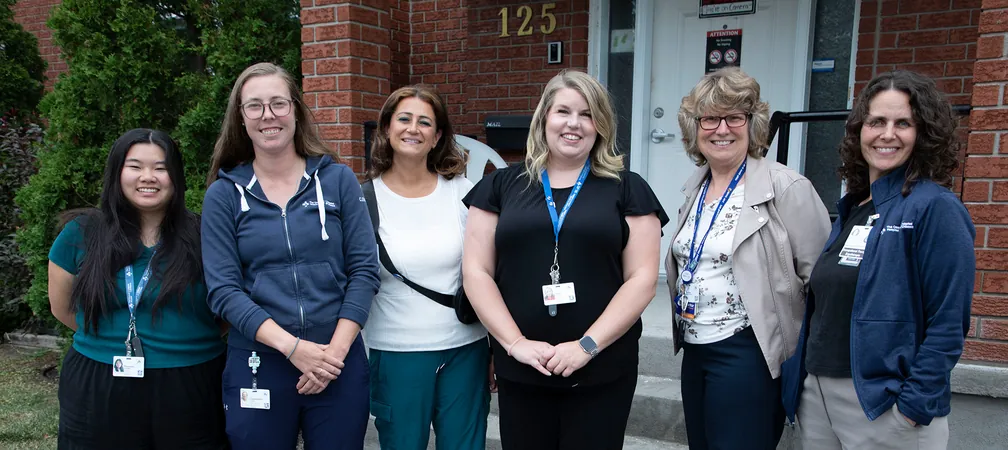
Revolutionary Imaging Technique Unveils the Twists of Polarized Light
2025-07-02
Author: Amelia
A Groundbreaking Breakthrough at EPFL
Scientists at the École Polytechnique Fédérale de Lausanne (EPFL) have unveiled a game-changing imaging technique that allows researchers to observe, with unparalleled sensitivity, how materials emit polarized light over time.
Understanding Polarization: More Than Meets the Eye
Light isn't merely about brightness or color; it features waves that can twist and turn in a phenomenon known as polarization. Think of the polarized glasses worn at 3D movies, which enhance depth perception by allowing each eye to see a slightly different image.
The importance of polarization extends into the future, affecting everything from quantum computing to secure communications and holographic displays. Many materials emit polarized light that encodes information, essentially using the direction of light waves as a method of communication. One fascinating form of this is called circularly polarized luminescence (CPL), a unique type of light emission created by chiral materials where light spirals either left or right.
Breaking Barriers in Research
In order to fully utilize these phenomena, scientists need to closely observe the evolution of polarization over time. Until now, researchers faced significant challenges, often compromising between speed, sensitivity, and color range due to the limitations of existing methods.
Traditional CPL techniques tend to be slow, narrowly focused, or unable to detect faint signals, particularly in advanced materials that exhibit subtle polarization effects. This has hampered progress in understanding how chiral materials interact with light.
The Cutting-Edge Solution
Enter Professor Sascha Feldmann and his team at EPFL's Laboratory for Energy Materials, who have developed a high-sensitivity, broadband, time-resolved spectroscopy technique that captures an entire range of polarization states—the "Stokes vector." This innovative approach spans a spectral window of 400 to 900 nanometers and can track polarization changes over time intervals ranging from nanoseconds to milliseconds.
With a noise floor impressively low—just one ten-thousandth the intensity of the emitted polarized light—this method captures both linear and circular polarization signals simultaneously, effectively mitigating polarization artifacts that often confuse other techniques. Their findings were published in the prestigious journal Nature.
Designing for Accessibility and Discovery
The new instrument was ingeniously crafted using readily available components, ensuring broad accessibility within the scientific community. The team is making these optical schematics public along with a guide to non-obvious error sources, aiming to empower researchers everywhere.
Utilizing an electronically gated camera paired with a specialized set of polarization optics, they successfully recorded the full Stokes vector in real time, capturing dynamic changes in light emitted from both strong and weak luminescence materials. This capability enables researchers to unveil details that previous methods have overlooked.
Unprecedented Insights and Future Implications
This novel approach has successfully tracked polarization changes in materials with unprecedented detail, validating established results and revealing new dynamics in organic emitters and complex systems experiencing rapid changes. Notably, it has identified subtle polarization artifacts that might confuse traditional measurements with genuine effects, helping researchers sidestep common errors.
With its combination of high sensitivity, extensive spectral coverage, and fast time resolution, this technique opens a groundbreaking window into the realm of excited-state polarization dynamics and symmetry-breaking. Scientists can now observe these processes in real time, significantly accelerating the development of chiral emitters, quantum materials, and advanced optoelectronic devices.
In a remarkable move to democratize scientific discovery, the EPFL team has also released their blueprints and automation algorithms, paving the way for accelerated research and innovation across the globe.









 Brasil (PT)
Brasil (PT)
 Canada (EN)
Canada (EN)
 Chile (ES)
Chile (ES)
 Česko (CS)
Česko (CS)
 대한민국 (KO)
대한민국 (KO)
 España (ES)
España (ES)
 France (FR)
France (FR)
 Hong Kong (EN)
Hong Kong (EN)
 Italia (IT)
Italia (IT)
 日本 (JA)
日本 (JA)
 Magyarország (HU)
Magyarország (HU)
 Norge (NO)
Norge (NO)
 Polska (PL)
Polska (PL)
 Schweiz (DE)
Schweiz (DE)
 Singapore (EN)
Singapore (EN)
 Sverige (SV)
Sverige (SV)
 Suomi (FI)
Suomi (FI)
 Türkiye (TR)
Türkiye (TR)
 الإمارات العربية المتحدة (AR)
الإمارات العربية المتحدة (AR)